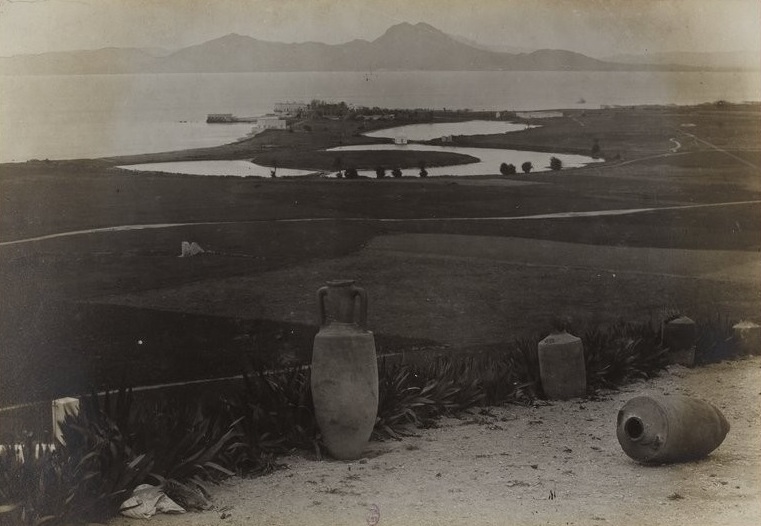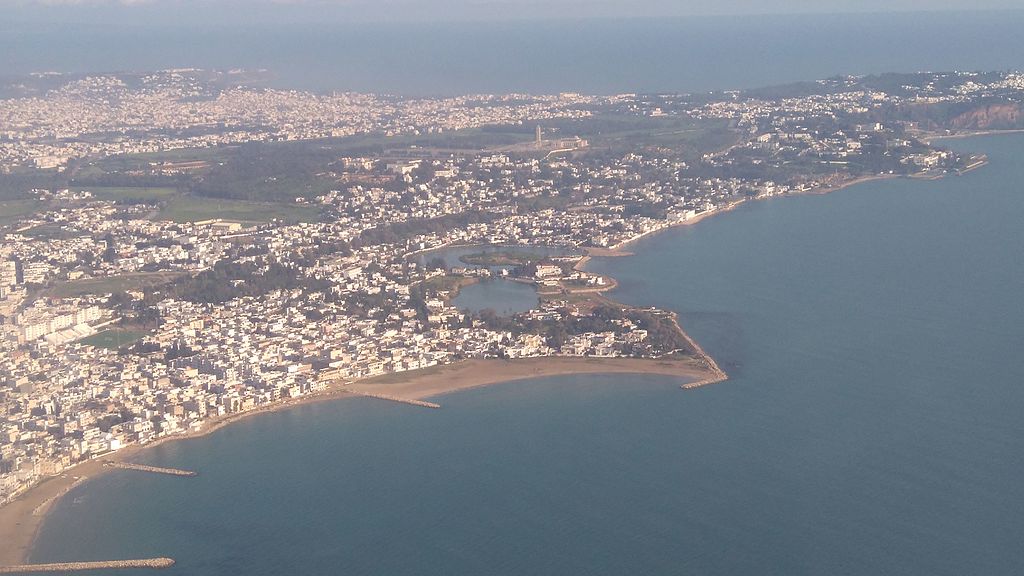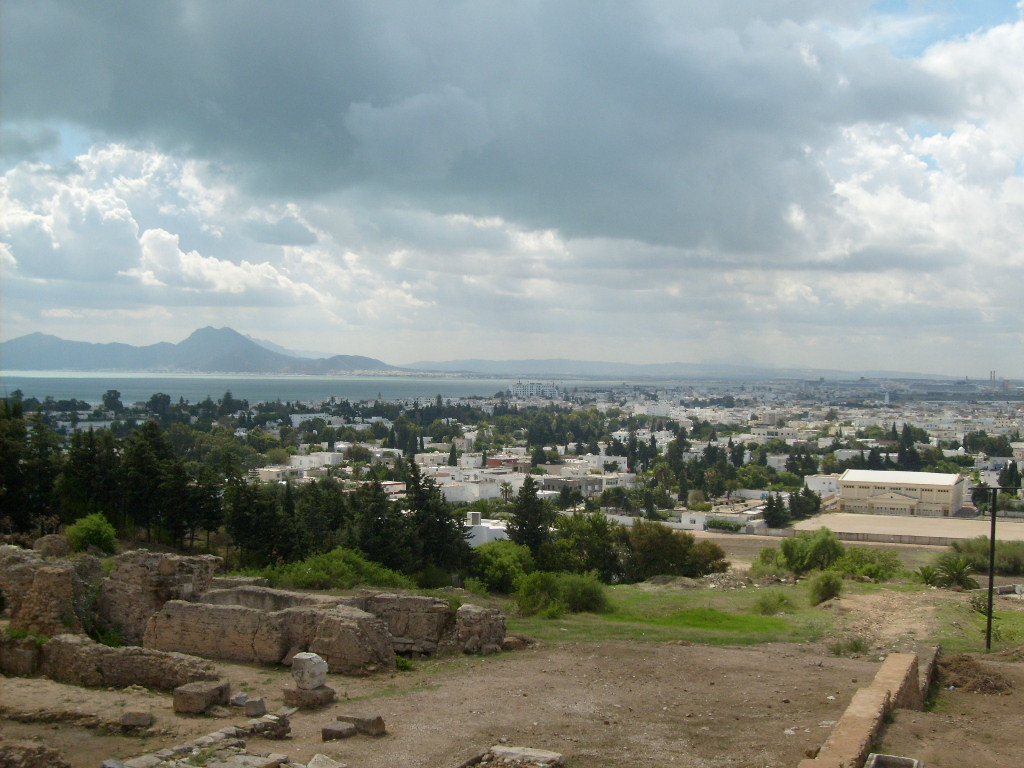“Delenda Cartago est”
(“Carthage must be destroyed”)[1]

The third stage of the Punic Wars was by far the shortest, lasting from 149–146 BCE, and was entirely fought in Africa, resulting in the destruction of Carthage. The decades following the Second Punic War saw the Carthaginians regain prosperity, while the Romans engaged in nearly continuous warfare in Spain, Gaul, and Macedonia.[2] Goldsworthy describes the war as pure aggression by Rome:
[T]here is no doubt that the Third Punic War was deliberately provoked by the Romans, who had made a conscious decision to destroy their old enemy. Roman negotiators shamelessly exploited the Carthaginians’ willingness to grant concessions in their desire to avoid war with Rome, steadily increasing their demands to force a conflict on a weakened enemy. It was a far worse display than any of the recorded examples of the proverbial “Punic treachery.”[3]
Both Hannibal and Scipio Africanus suffered disappointments after the war.[4] Hannibal was not punished or executed but was elected as suffete (the Carthaginian equivalent of a senator). However, because he brought about financial reform and initiated actions against corrupt officials, he made enemies among the elite.[5] He fled Carthage and eventually ended up at the court of Antiochus III, the Macedonian king who ruled large parts of Syria and West Asia.[6] Hannibal assisted Antiochus by commanding a small fleet against the Romans, although the Romans were victorious.[7] Fearing Antiochus would deliver him to the Romans, Hannibal escaped to Crete and later to Bythnia, joining Prusias, a king who was fighting against a Roman ally, Eumenes of Pergamum.[8] Although he helped Prusias on several occasions, Prusias was eventually forced to tell the Romans Hannibal’s location.[9] When the Romans, led by Titus Quinctius Flamininus, surrounded the house where he was, Hannibal took poison.[10] Livy states that Flamininus should not consider his victory magnificent or memorable, as it came against an unarmed and betrayed man.[11]

For his part Scipio Africanus proved that although he was a great general he was not skilled at navigating complex Roman politics.[12] In 190 BCE, he and his brother Lucius Cornelius Scipio took command of the Roman forces fighting Antiochus III and brought the conflict to a successful conclusion. However, both Scipios were sued for corruption and misappropriation of funds upon their return to Rome.[13] Africanus famously tore up the accounts of his brother in front of the Senate.[14] When the day for his own trial came, Africanus noted it was the anniversary of his victory at Zama and left the courtroom to proceed to the Capitoline temples to give thanks. So many followed him that the proceedings were suspended for the day.[15] However, the prosecution was continued and Africanus went into voluntary exile at his villa at Liternum in South Central Italy, dying in 187 or 184 BCE. His brother Lucius, also accused of corruption, was being taken to prison when he was pardoned by Tiberius Gracchus.[16]
Livy also recounts the story that Scipio Africanus and Hannibal met once more at Ephesus when Scipio was serving as a member of an embassy to Antiochus III. Scipio asked Hannibal to name the three greatest generals. Hannibal named Alexander the Great, Pyrrhus, and himself, in that order. When Scipio laughed and asked what Hannibal would say if he had won against Scipio at Zama, Hannibal replied that in that case he would place himself first.[17]

In the meantime, Marcus Porcius Cato, an enemy of the Scipios and veteran of the Second Punic War, was rising to power. Benefitting from his friendship with the nobleman Lucius Valerius Flacchus, he became a senator as “one of the many equestrians whose proven courage prompted their enrolment into the Senate. . . .”[18] Noted for his conservatism, Cato was quite litigious, believing the influence of the Greek world was a threat to traditional Roman values.[19] In 205 BCE, while serving as quaestor (auditor) with Scipio Africanus’s expedition preparing to sail to Africa, he criticized the general’s extravagance, and he continued to mount attacks on both Scipio brothers in the years that followed. Elected as censor in 184 BCE, he obtained the authority to demote equestrians and remove senators thought to have behaved immorally. A censor was also responsible for assessing property taxes and conducting the census.[20]
Rome, as evidenced by Cato and his war-favoring allies in the Senate, continued to see Carthage a threat.[21] Due to Hannibal’s financial reforms, Carthage offered to pay its war indemnities early, an offer the Romans declined.[22] In addition, Carthage rebuilt its trading ties and became prosperous once again, able to provide grain to the Roman army and even to dispatch its tiny navy to fight for Rome against Antiochus III.[23] Moreover, as Miles observes: “[W]hatever its actual or potential military threat, Carthage, through its mercantile and agricultural wealth, had now become an attractive prospect for slavering Romans who wished it as their own.”[24] Carthage probably did not expect its subjugation to Rome to last forever and wanted to avoid war with Rome, while the Romans “expected a more permanent outcome to their wars.”[25]
Rome’s old ally, the Numidian king Massinissa, had made regular incursions against Carthaginian territory in the decades following the Second Punic War.[26] According to the treaty ending the Second Punic War, Carthage could not wage war outside Africa, and could not wage war in Africa without Roman permission.[27] Therefore, Carthage requested Roman help against Massinissa on many occasions. Rome ignored these requests and resolved all controversies in favor of Massinissa. In the 150s BCE the Numidians increased their incursions.[28]
In 153 BCE a Roman delegation headed by Cato was sent to Carthage. Cato was disturbed at the apparent wealth of Carthage and made it his mission to promote war.[29] After returning to Rome, Cato, during a speech to the Senate, let huge figs fall from his toga and informed his fellow senators that these fruits had originated in Carthage, only three days away by boat. Thereafter, following every speech he made in the Senate, no matter what the subject, he called for Carthage’s destruction. It should be noted that some senators opposed war with Carthage, most notably Scipio Nasca, the son-in-law of Scipio Africanus, who believed the continued fear of a common enemy would preserve Roman unity. He ended all his speeches with “Cartago servanda” (Carthage must be preserved).[30]
Cato and his political allies obtained their excuse for war in 151 BCE, when Massinissa besieged the Carthaginian city of Oroscopa. The Carthaginian Senate, weary of their requests for aid being ignored by the Romans, decided to respond without seeking Roman permission, and raised an army from both citizens and freed slaves, under the command of a general named Hasdrubal.[31]
Polybius gives an unflattering portrait of Hasdrubal as a corpulent, cowardly braggart with no competence as a general or a statesman.[32] Nonetheless, Hasdrubal took 25,000 of the new Carthaginian recruits and attempted to lift the Numidian siege. However, he could not overcome the 89-year-old Massinissa and his forces, suffering an ignominious defeat at the Battle of Oroscopa.[33] Scipio Aemilianus, the adopted grandson of Scipio Africanus, was there to witness the battle, having been sent from Spain to buy war elephants from Massinissa, and tried without success to broker a peace between Massinissa and Hasdrubal.[34]
The Roman Senate determined Carthage had violated their treaty and rebuffed attempts by Carthaginian envoys to explain the situation. The Senate sent troops to the Carthaginian city of Utica, which had placed itself under Roman protection.[35] Consul Manius Manilius commanded the army while his co-consul, Lucius Marcius Censorinus commanded the Navy.[36]
The Carthaginians attempted to negotiate by agreeing to ever more severe demands by the Romans. They turned over their weapons and warships, including 200,000 sets of armor, 2000 catapults, and all their warships, which were burned in Utica harbor.[37] However, the Romans demanded that they evacuate their city so it could be burned and moved 10 kilometers inland. This the Carthaginians finally refused to do, and the Romans besieged the city.[38]

Carthage sat on a gulf, separated from the mainland by an isthmus, from which a long strip of land extended between a lake and the sea. In addition, the city had a double harbor consisting of an outer harbor for commercial vessels and an inner, circular harbor for military vessels. The city itself had significant defensive walls, in addition to palisades and ditches.[39] Believing the Carthaginians to be unarmed, Manilius and Censorinus launched several attacks on the city’s defenses, but were driven back each time.[40] Then the Carthaginians attacked Roman ships and siege engines, and an epidemic swept through the Roman camps.[41] Scipio Aemelianus, the adopted grandson of Scipio Africanus, was serving as a tribune during these initial assaults, and showed himself to be a wise commander when he held his troops back from rushing a gap in the city walls, thus avoiding massive casualties.[42]
In 148 BCE, only one of the newly elected consuls, Lucius Calpurnius Piso Caesoninus, came to Africa, where he achieved very little. He failed to take the cities of Aspis and Hippagreta, causing the Carthaginians to become more confident.[43] The Carthaginians then formed an alliance with Andriscus, a pretender to the Macedonian throne.[44] Andriscus invaded Roman Macedonia, and inflicted a crushing defeat on the Romans, leading to war in Macedonia.[45]
The Romans’ luck changed in 147 BCE with the election of Scipio Aemelianus as consul, although he was too young for the post.[46] He supervised the building of more extensive siegeworks and a breakwater blocking the harbor.[47] However, when the Carthaginians saw this, they cut a new channel leading from the military harbor to the sea, doing the work at night with the help of the city’s women and children. At the same time, the Carthaginians constructed a fleet of fifty triremes and numerous smaller ships.[48]
Although Appian suggests this new Carthaginian fleet could have engaged the Romans immediately, Goldsworthy asserts three days would have been necessary to train the crews of the ships, who had not seen action on the sea for years.[49] When the two fleets finally met, the Carthaginians held their own until a collision by some of their smaller ships blocked the new channel. The Carthaginian ships were thus unable to maneuver and found themselves pinned against the city walls. Many Carthaginian ships sank or were captured.[50]
In the waning months of 147 BCE, the Romans constructed a brick wall from which they could launch renewed barrages of spears and missiles on the city walls.[51] In addition, Scipio attacked the Punic army stationed at the city of Nepheris, defeating the last force which could have prevented Rome’s success.[52]

In the spring of 146 BCE the Romans finally broke through the Carthaginian defenses. After six days of fighting house to house and in the streets, looting as they went, the legionaries made their way to the final holdout, the citadel on the hill called the Byrsa, occupied by the remaining citizens, Hasdrubal and 900 Roman deserters.[53]
On the seventh day, the 50,000 remaining Carthaginians brought olive branches to Scipio, offering surrender. Scipio agreed to spare the lives of all but Hasdrubal and the deserters, and the 50,000 were sold into slavery.[54] Eventually Hasdrubal surrendered, but not before his wife and their two children threw themselves onto a funeral pyre in disgust at his perceived cowardice.[55] Ironically, Polybius also reports Scipio had earlier promised safe passage from the city to Hasdrubal and his family, but Hasdrubal had refused, saying that the day would never come when Hasdrubal would look at the same time on the sun and on Carthage burning.[56]
The Romans proceeded to burn the city to the ground, and it would not be reoccupied until the reign of Augustus.[57] When Scipio, who would, like his forebear, receive the name “Africanus,” saw Carthage in flames, he wept, quoting from Homer: “The day shall come in which our sacred Troy, and Priam, and the people over whom spear-bearing Priam rules, shall perish all.”[58]
Previous in this series:
Notes
1 Delenda Cartago Est, or “Ceterum autem censeo Carthaginem esse delendam ” (“Furthermore, I consider that Carthage must be destroyed”) is often quoted but does not appear in this form in any ancient source. See, Little, Charles E. “The Authenticity and Form of Cato’s Saying ‘Carthago Delenda Est.’” The Classical Journal 29, no. 6 (1934): 429–35. http://www.jstor.org/stable/3289867. However, the phrase is recorded, in similar words, by various ancient authors. See, Plutarch, “Life of Cato the Elder,” The Parallel Lives, 27.1: (“ἐκεῖνο δ̓’ ἤδη καὶ βιαιότερον, τὸ περὶ παντὸς οὗ δήποτε πράγματος γνώμην ἀποφαινόμενον προσεπιφωνεῖν οὕτως· ‘Δοκεῖ δέ μοι καὶ Καρχηδόνα μὴ εἶναι.’”); Pliny the Elder, Natural History, 15. 20: (“[Cato] clamaret omni senatu Carthaginem delendam.”), available in Latin at penelope.uchicago.edu, and in English translation at perseus.tufts.edu.
2 Adrian Goldsworthy, The Fall of Carthage: The Punic Wars 265–146 BC (London: Cassell Books, 2000), 327, Kindle. (“The archaeological record suggests a high level of prosperity [in the interwar period] reflected in the widespread construction of substantial new houses within Carthage and a rich material culture.”) Kindle. See also Richard Miles, Carthage Must be Destroyed: The Rise and Fall of an Ancient Civilization (New York: Penguin Group, 2011), 423, Kindle. (”Whereas Carthage could continue to rebuild its economy in peace, Rome was involved for much of the first half of the second century BC in a series of draining wars in Greece and Asia Minor. . . .”)
3 Goldsworthy, Fall of Carthage, 330-331. See also, Adcock, F. E. “‘Delenda Est Carthago.’” Cambridge Historical Journal 8, no. 3 (1946): 117–28. https://www.jstor.org/stable/3020657. (“The odious behavior of the Romans in the events that led to the destruction of Carthage has earned the condemnation of historians who see in it, as they have a right to do, a moral issue.”).
4 Miles, Carthage Must Be Destroyed, 420.
5 Titus Livius (Livy), 33.46.1-33.47.5.The Complete Works of Livy, trans. B. O. Foster and William A. McDevitte. (Hastings, East Sussex: Delphi Classics, 2014).
6 Livy, 33.49.5-8.
7 Cornelius Nepos, Vitae, Hannibal, 8.4.–9.1. available in English translation at attalus.org.
8 Nepos, Hannibal, 9—11.
9 Livy, 39.51.1-4; Nepos, Hannibal, 12.
10 Ibid., 39.51.8-9.
11 Ibid., 39.51.10. (“Nec magnam nec memorabilem ex inermi proditoque Flamininus victoriam ferret.”)
12 Goldsworthy, Fall of Carthage, 323.
13 Miles, Carthage Must Be Destroyed, 420.
14 Goldsworthy, Fall of Carthage, 323.
15 Livy, 38.50-52.
16 Ibid., 38.50-60.
17 Livy, 35.14.
18 Goldsworthy, Fall of Carthage, 324.
19 Ibid., 324.
20 Plutarch, Lives, Marcus Cato 16.2-3. available in English translation at perseus.tufts.edu.
21 Goldsworthy, Fall of Carthage, 331-332.
22 Ibid., 327.
23 Ibid., 331.
24 Miles, Carthage Must Be Destroyed, 440.
25 Goldsworthy, Fall of Carthage, 332. (“Rome was never content with alliances which implied any level of equality with a former foe.”).
26 Polybius, Histories, 31.21.1-2. available at perseus.tufts.edu. available in English translation at penelope.uchicago.edu and at gutenberg.org (numbered as XXXII.2).
27 Ibid., 15.18.4.
28 Appian of Alexandria, The Punic Wars, 14.67-68 (as numbered on livius.org). available in English translation at perseus.tufts.edu (numbered as 10.67–68).
30 Ibid., 27.1.
31 Goldsworthy, Fall of Carthage, 336.
32 Polybius, Histories, 38.7–8 in the Greek on Perseus, and in English on penelope.uchicago.edu (=38.1-2 on gutenberg.org).
33 Appian, 14.70-15.71-73 (as numbered on livius.org), 10.70–73 (as numbered on Perseus).
34 Ibid., 15.71-72 (livius.org), 10.71–73 (Perseus).
35 Polybius, 36.3 (penelope.uchicago.edu, Perseus).
36 Appian, 15.75 (livius.org), 11.75 (Perseus).
37 Polybius, 36.6 (penelope.uchicago.edu, Perseus).
38 Appian, 17.81—85 (livius.org), 12.81–85 (Perseus).
39 Ibid., 19.95-20.96 (livius.org), 14.95–96 (Perseus); Miles, Carthage Must Be Destroyed, 446; Goldsworthy, Fall of Carthage, 340.
40 Appian, 20.97 (livius.org), 14.97 (Perseus).
41 Ibid., 20.99 (livius.org), 14.99 (Perseus); Goldsworthy, Fall of Carthage, 343.
42 Appian, 20.98 (livius.org), 14.98 (Perseus).
43 Ibid., 22.110 (livius.org), 16.110 (Perseus); Goldsworthy, Fall of Carthage, 346.
44 Appian, 23.111 (livius.org), 16.111 (Perseus).
45 Goldsworthy, Fall of Carthage, 346.
46 Appian, 23.112 (livius.org), 17.112 (Perseus); Goldsworthy, Fall of Carthage, 346.
47 Goldsworthy, Fall of Carthage, 349.
48 Appian, 25.121 (livius.org), 18.121 (Perseus).
49 Ibid., 25.122 (livius.org), 18.122 (Perseus); Goldsworthy, Fall of Carthage, 349.
50 Goldsworthy, Fall of Carthage, 349-350.
51 Goldsworthy, Fall of Carthage, 351.
52 Appian, 26.126 (livius.org), 18.126 (Perseus); Goldsworthy, Fall of Carthage, 351.
53 Appian, 26.127-130 (livius.org), 19.127–130 (Perseus); Goldsworthy, Fall of Carthage, 352.
54 Appian, 26.130 (livius.org), 19.130 (Perseus); Goldsworthy, Fall of Carthage, 353.
55 Polybius, 38.20 (penelope.uchicago.edu, Perseus).
56 Ibid., 38.8.8 (penelope.uchicago.edu, Perseus).
57 However, the ancient sources do not mention the land being sown with salt; that appears to be a later tradition, perhaps derived from the Biblical story of Shechem. See, Ridley, R. T. “To Be Taken with a Pinch of Salt: The Destruction of Carthage.” Classical Philology 81, no. 2 (1986): 140–46. https://www.jstor.org/stable/269786.
58 Miles, Carthage Must Be Destroyed, citing Appian, 8.19.132 and Homer, Iliad, 6.448-449 (“ἔσσεται ἦμαρ ὅτ᾽ ἄν ποτ᾽ ὀλώλῃ Ἴλιος ἱρὴ, καὶ Πρίαμος καὶ λαὸς ἐϋμμελίω Πριάμοιο.”).
Image credits
An 1897 Photograph of Carthage, showing the ruins of the commercial harbor and the circular military harbor from ground level.
Photo: Maurice Guibert. Public Domain, via Wikimedia Commons
Titus Quinctius Flaminus on a coin (no date given), British Museum
PHGCOM, public domain, via Wikimedia Commons
Marcus Porcius Cato Censorius major, illustration 1510–1562, Rijksmuseum
Creative Commons CC0 1.0 Universal Public Domain Dedication, via Wikimedia Commons
An Aerial View of Modern Carthage, showing the ruins of the commercial harbor and the circular military harbor.
Photo: Citizen 59. CC BY 3.0, via Wikimedia Commons
View of Modern Carthage from the Byrsa hill, September, 2008.
Photo: Mourad Ben Abdallah. Public Domain, via Wikimedia Commons
___
Kelly Lambert is a member of the Kosmos Society.